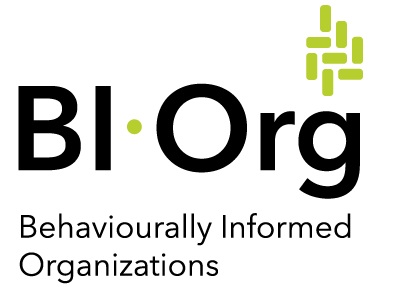Lab to Field: How to Successfully Translate and Scale Behavioural Insights
(Target year for publication 2022)
Co-Editors: Nina Mažar (Boston University) and Dilip Soman (University of Toronto)
CALL FOR CHAPTER PROPOSALS
About
This book will be published by the University of Toronto Press and is sponsored by the Behaviourally Informed Partnership project (biorgpartnership.com) at the BEAR centre, University of Toronto.
Overview
Governments, for-profit enterprises as well as other welfare organizations have increasingly started relying on findings from the behavioural sciences to develop more human compliant products, processes, and experiences for their end-users. While there is a burgeoning science that helps us understand why people act and decide the way they do, and how their actions can be influenced, we still lack a precise science of how some of our key laboratory theoretical findings can be successfully translated, scaled and applied in the field.
Goals and proposed sections
The goal of this book is to develop a nuanced perspective on how we should think about translating research from our labs into the field. In particular, what prescriptive advice can we give to an applied practitioner who reads a specific research finding from a paper and is wondering about whether they should incorporate that finding into their business or policy problem across the globe? This book aims to provide readers with the following insights, corresponding to the proposed sections of the book:
A) What do I need to consider when applying insights from peer-reviewed journals? [due to, e.g., differences in context, population, underlying bottlenecks, specific design features of the experiment, crowding out, or other scaling challenges effects are likely to be smaller, interventions may not work or even backfire, there may be side-effects, etc.)
B) How robust are some of the most applied interventions/phenomena across different contexts and populations (also in terms of duration) – when are they likely to work and when not and how do they compare to more traditional incentives? These interventions include (but are not restricted to) social norms, choice architecture, personalization, mindset manipulations, planning promps / implementation intentions.
C) What are some promising interventions/phenomena in the context of specific substantive matters, what are interventions that are the least likely to work in these contexts, and how do they compare to more traditional incentives? Potential domains include healthy behaviors, giving/donations (organs, blood, money), education, diversity and inclusion, financial decision making, compliance, environment and sustainability
D) Checklists / toolkits of what to look for/ensure to increase chance for success
Audience and Style
The audience for this book are practitioners interested in applying behavioral science to behavior change problems in society or business. Contributions should be written in a clear, concise manner that is easily accessible to a practitioner who might not be intricately familiar with the breadth or the nuances of the academic literature.
Accordingly, we are looking for contributions that take the form of essays targeting the practitioner who reads a journal article and is thinking about how to apply that finding in their own applied context. These essays could be based on a) a specific academic paper (e.g., a meta-analysis), b) a collection of papers (e.g., based on a series of projects that you / colleagues have worked on), c) projects that you worked on as a practitioner or applied researcher that did not necessary get published in an academic journal. Each chapter will be no longer than 4000 words (roughly 15 or 16 double-spaced pages), plus references.
Process
Step 1: Interested contributors can submit short proposals using this link. Deadline for submission: July 20, 2020 Noon EDT
Step 2: Proposals will be reviewed by the co-editors and three additional reviewers (both from academia and practice). Authors of selected proposals will be notified by September 1, 2020.
Step 3: A first draft of chapters will be due by February 28, 2021.
Step 4: Co-editors will send feedback and comments, and final versions of chapters will be due by June 15, 2021.
